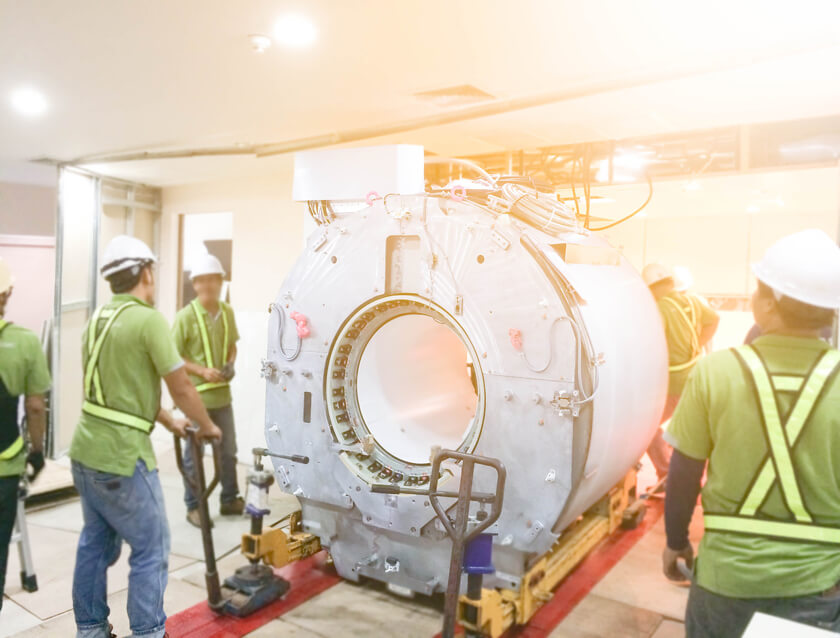
FDA Shares New Guidance for Medical Device Manufacturers to Make MRIs Safer

Because it does not use radiation to create images of tissues and organs inside a living body, magnetic resonance imaging (MRI) is one of the safest diagnostic tests used today. While relatively safe, MRIs do pose unique safety hazards for patients and others near or inside the magnetic resonance (MR) environment. To ensure safety and effectiveness of implants and other medical devices entering the MR environment, the U.S. Food and Drug Administration (FDA) has issued a draft for new guidelines that medical device manufacturers can use.
How MRIs Work
Protons are positively charged particles inside atoms. Interestingly, these protons spin constantly. Protons also have a magnetic component that makes them all stop spinning and face in the same direction, or align, in the presence of a magnet.
MRIs use strong magnets to create a magnetic field, which temporarily realigns the water molecules inside the body. Turning off the magnetic field allows the water atoms to return to normal their normal spinning rates; molecules in some types of tissue return to normal faster than do molecules in other tissues. Radio waves generated by the MRI cause the realigned molecules to produce faint signals as they spin and return to normal, which the MRI computers use to create images of various tissues.
While the magnetic fields in the MR environment are a safe way to create images of tissues inside the human body, they do present risks to patients and others in the immediate area. The magnets can attract metal objects, which can then become airborne and strike people in the room. Ferromagnetic metal pieces, fragments, or implants inside the body can twist or move to cause injury or death. Even non-ferromagnetic metal, such as metal on or in clothing, can heat up during scanning and can potentially cause discomfort or burns.
The magnetic fields can affect other metals in the MR environment, which is the area surrounding the MRI. These magnetic fields can pull in
The operation of a medical device, such as an implanted medical device, an external insulin pump or other external medical device, in the MR environment can affect the quality of the MRI images. Even dental implants can affect MRI. Poor quality images are difficult to interpret, as garbled images and “artifacts” can sometimes mimic a disease that the patient does not actually have. In other words, poor quality MRI images caused by medical devices can affect how doctors diagnose and treat the patient.
Radiologists, FDA and Medical Device Manufacturers Work Together to Ensure Safety in the MRI
To keep patients, MRI providers and others safe, manufacturers of medical devices test their products for use in the MR environment. The FDA plays a major role in guiding medical device manufacturer testing.
FDA Issues Guidelines to Improve Compatibility of Medical Devices and MRI
To address these issues, the FDA issued a draft of their new guidelines on August 2, 2019. The approved draft should:
- Provide recommendations medical device makers can use to test their products for compatibility and safety inside or near MRIs
- Help medical device makers identify tests that address hazards specific to the MRI environment
- Provide a recommended format that medical device makers can use to publish MRI safety information in their medical device labeling
- Allow medical device makers to make comments to the FDA regarding the draft
The FDA document also covered some of the potential safety issues posed by medical devices in the MR environment, such as:
- Magnetically induced misplacement of the device
- Torque, or turning, of the device
- Heating of the medical device or surrounding tissue
- Vibration of the medical device
- Unintended stimulation of the device
- Malfunction of the device
- Image artifacts
- MR-conditional – testing shows that the device is safe in the MR environment under certain conditions
- MR safe – the medical device does not pose a hazard in any MR environment
- MR unsafe – the product poses an unacceptable risk to the patient, medical staff or others in the MR environment
The FDA will leave the draft document open to comments for 60 days. These comments may help shape the final guidelines set by the FDA. Once approved, the new information will replace the existing guidelines, set in 2014.
To stay safe and improve the quality of their imaging results, patients should always inform their radiologists of any metal implants, medical devices or jewelry. For more information about safety in the MR environment, consult with your radiologist, doctor or other health professional. Understanding the safety of your medical devices, or other metal in clothing or jewelry, can help you stay safe during diagnostic testing and help you get the most accurate diagnostic test results possible.




